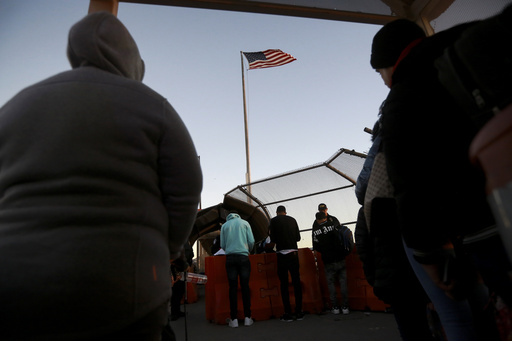
MEXICO CITY — Mexico is now bracing itself for another term under Donald Trump as he reclaims the presidency, and its past experiences with his controversial rhetoric position it uniquely in this tumultuous scenario. Throughout his previous administration, Trump directed threats towards Mexico, including proposals to close borders, impose tariffs, and even deploy U.S. military forces to combat drug cartels if Mexico was perceived as inadequate in managing migration and drug trafficking.
Additionally, the prospect of mass deportations of undocumented migrants poses a significant risk to remittances, a vital economic lifeline for many families in Mexico that rely on financial support from abroad.
Despite historical cooperation, the dynamics are notably different this time. Claudia Sheinbaum, Mexico’s current president, is a more resolute leftist than her predecessor, Andrés Manuel López Obrador. Their contrasting backgrounds suggest Sheinbaum may not engage with Trump as seamlessly as López Obrador did. While López Obrador’s charismatic and pragmatic political style allowed him to negotiate effectively with Trump in the past, Sheinbaum’s background in radical activism may lead to a more ideological approach, particularly regarding contentious issues such as immigration and tariffs.
Sheinbaum was proactive in reaching out to Trump immediately following his election victory, marking her as one of his first international contacts. During their conversation, Trump’s mentions of border issues and his reference to López Obrador could indicate his expectations regarding Mexico’s leadership and his intent to maintain a robust negotiating stance. Some analysts suggest that Trump sees López Obrador, who has been influential in Sheinbaum’s political career, as still being in control of Mexican policies, which could complicate diplomatic engagement.
Experts, like former ambassador Arturo Sarukhan, highlight that Sheinbaum’s identity as a woman and her political background will play pivotal roles as the two leaders navigate their relationship. Despite such challenges, Mexico remains a critical trading partner for the U.S., with annual trade exceeding $800 billion, and American companies are increasingly reliant on Mexican manufacturing.
The upcoming review of the United States-Mexico-Canada Agreement (USMCA) adds another dimension to the bilateral discussions, especially with Trump’s potential demand for renegotiations based on recent legal changes made by Mexico. Sheinbaum has indicated her willingness to engage in dialogue, emphasizing unity and collaboration, yet historical precedent suggests that such firm positions may falter under pressure, as evidenced by past negotiations led by López Obrador’s administration.
Former diplomat Marcelo Ebrard, now Mexico’s economy secretary, has downplayed fears of heightened tensions, arguing that economic interdependence will facilitate a stable relationship with the Trump administration. He contends that any aggressive moves like tariffs would ultimately harm the U.S. economy, but skepticism remains. Other diplomats caution against underestimating the friction that could arise from Trump’s hardline stance on immigration, emphasizing that his approach is rooted in national security and cultural identity considerations, rather than economic rationale.
Both countries may find themselves grappling with issues linked to U.S. job restoration efforts and countering China’s expanding influence, exacerbated by constructing automotive plants in Mexico which pose competitive threats to U.S. manufacturers. Sheinbaum’s push to dismantle independent regulators and oversight bodies might further endanger trade relations under the USMCA framework, risking potential violations that could spark Trump’s ire and lead to renegotiation demands concerning the auto industry.
As for cooperation in combating the illegal drug trade, there have been tentative signs of progress. Recently, Mexican authorities seized over 300,000 fentanyl pills in Tijuana, a notable increase from previous months of minimal drug confiscations. However, Sheinbaum’s approach appears to diverge from López Obrador’s non-confrontational tactics regarding drug cartels, and any acceptance of U.S. military involvement in Mexico remains highly contentious.
Ultimately, the evolving landscape between Mexico and the Trump administration raises critical questions regarding the trajectory of bilateral relations. While only time will tell how Trump’s presidency impacts this dynamic, there are indications he may approach negotiations with vehemence, often making bold claims while exhibiting a tendency to temper them with calculated responses. Sarukhan aptly points out that Trump is likely to make a grand show of authority in these discussions.
